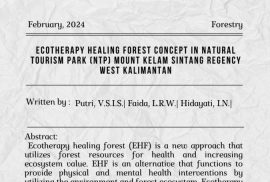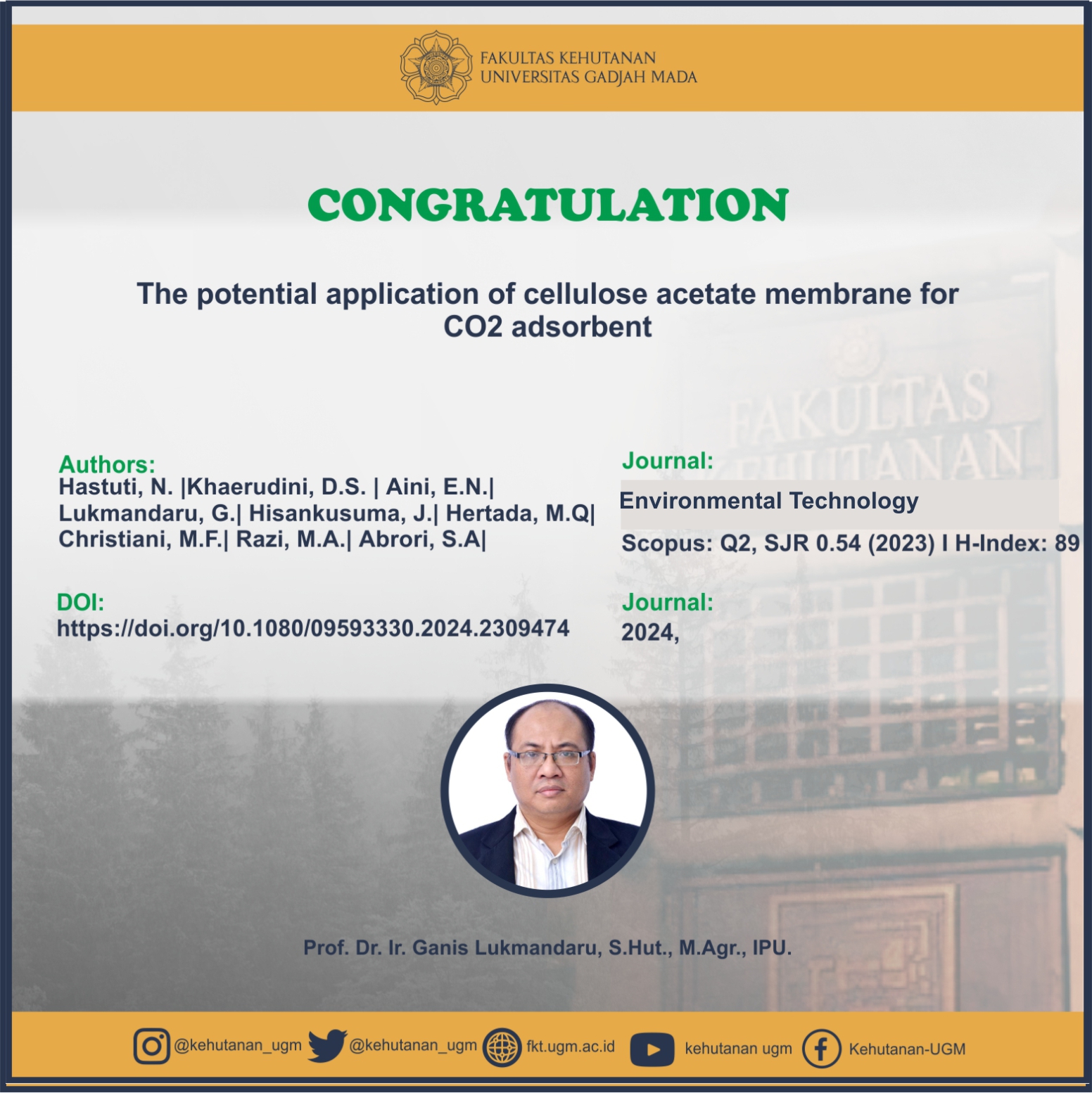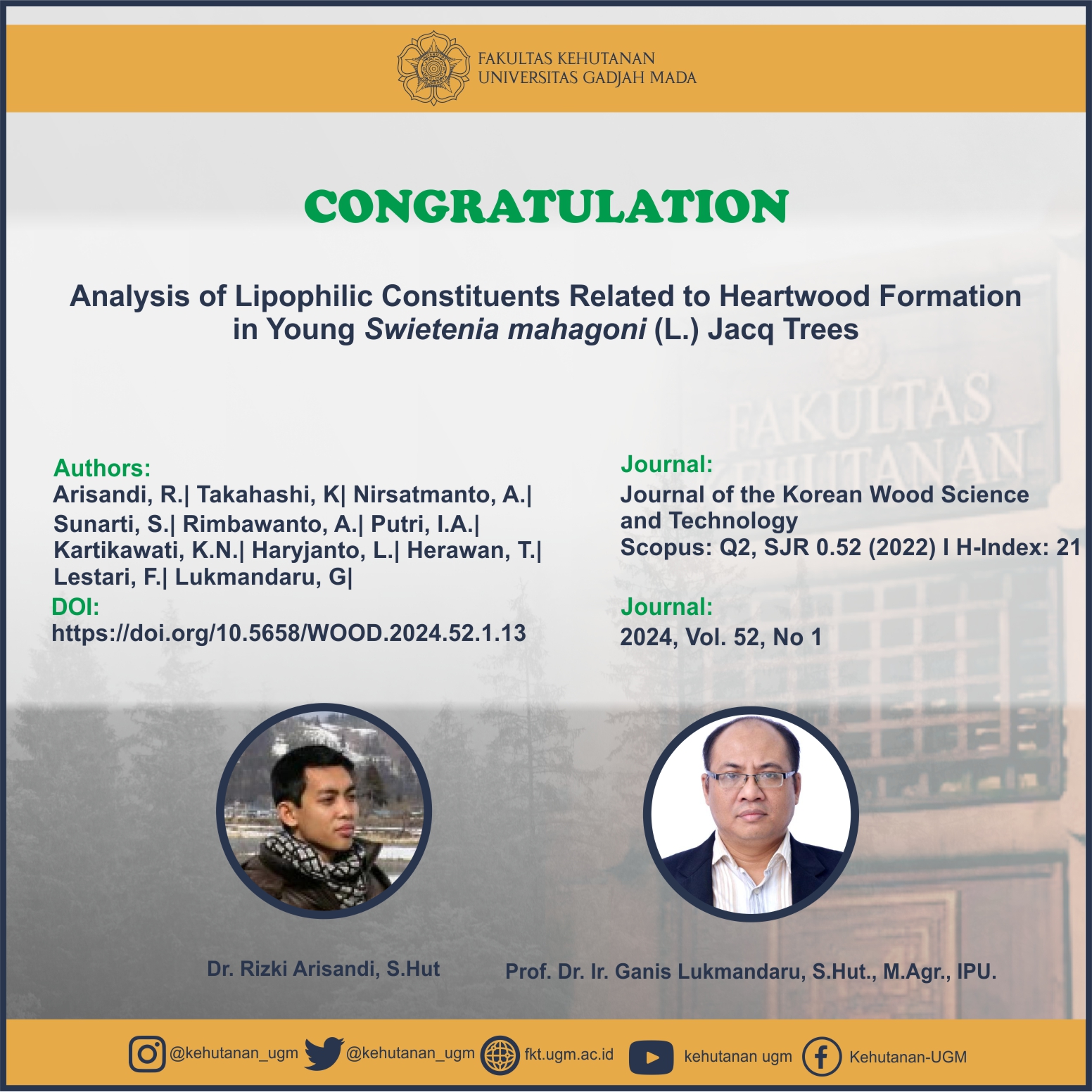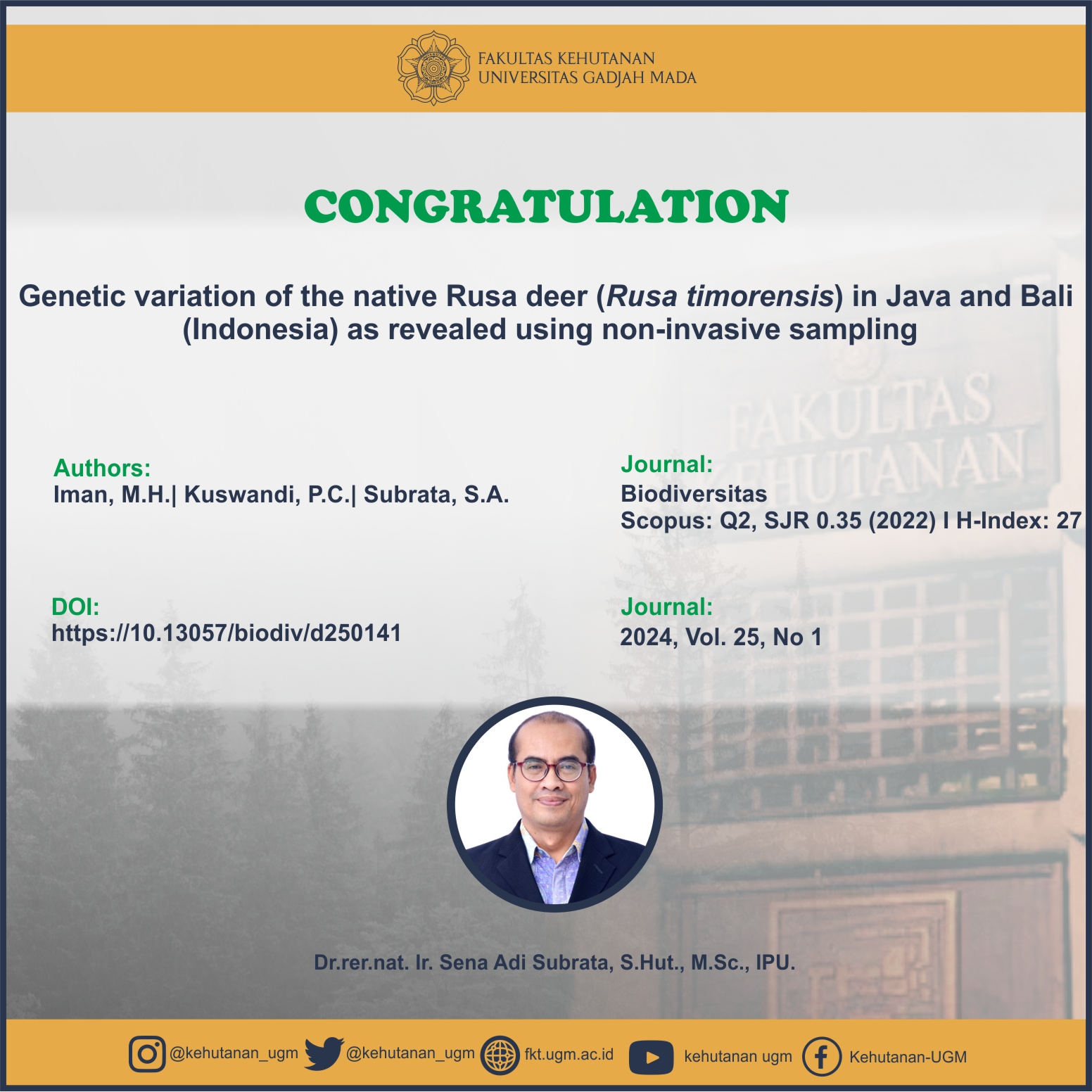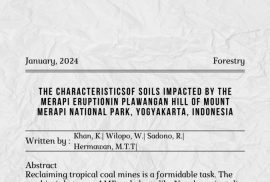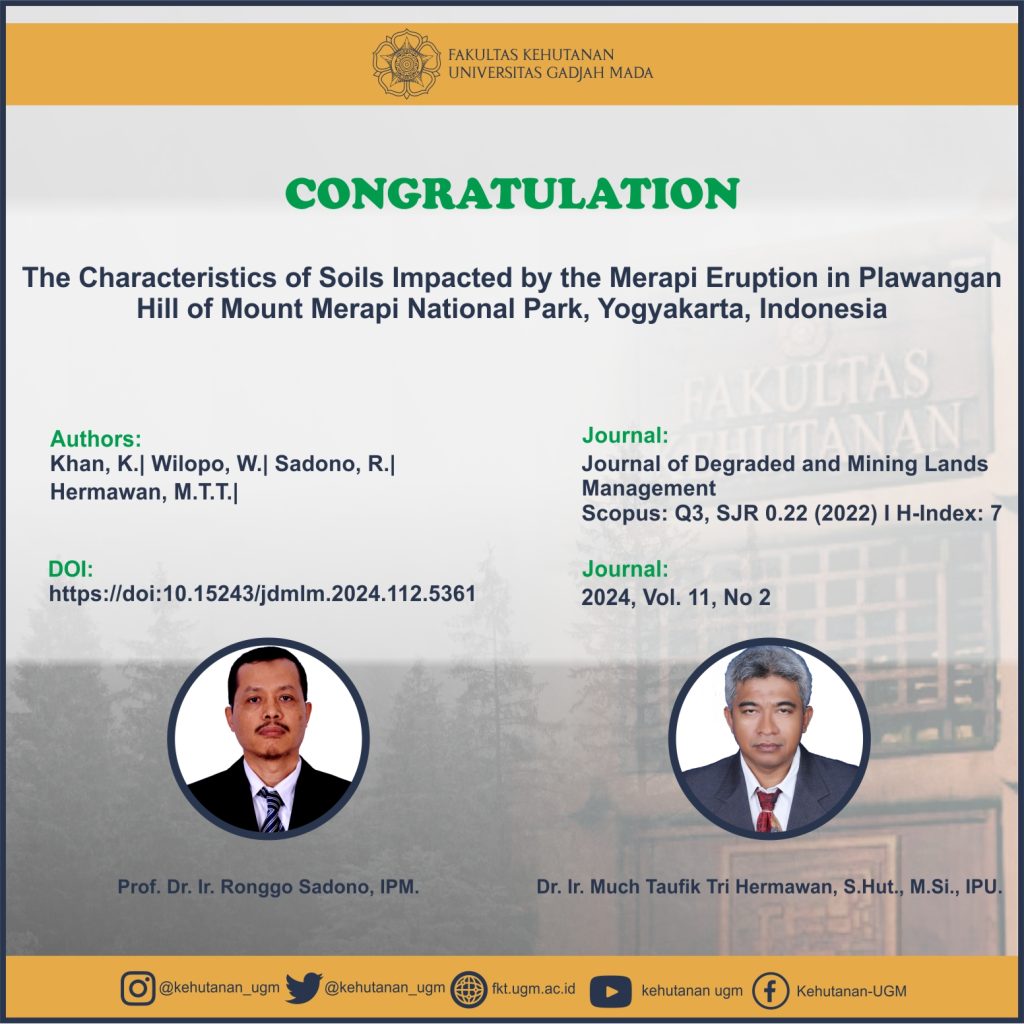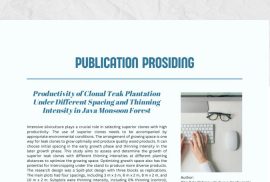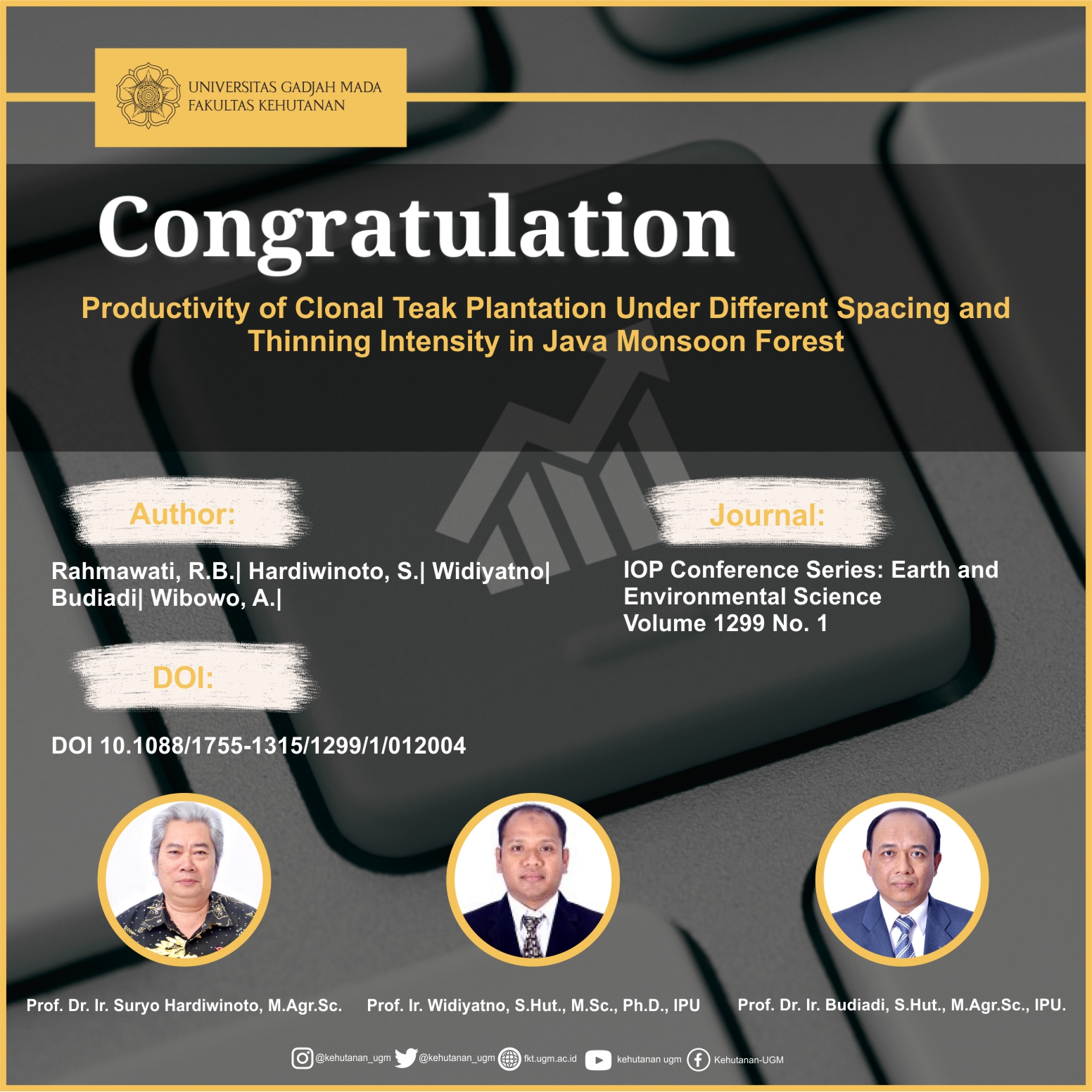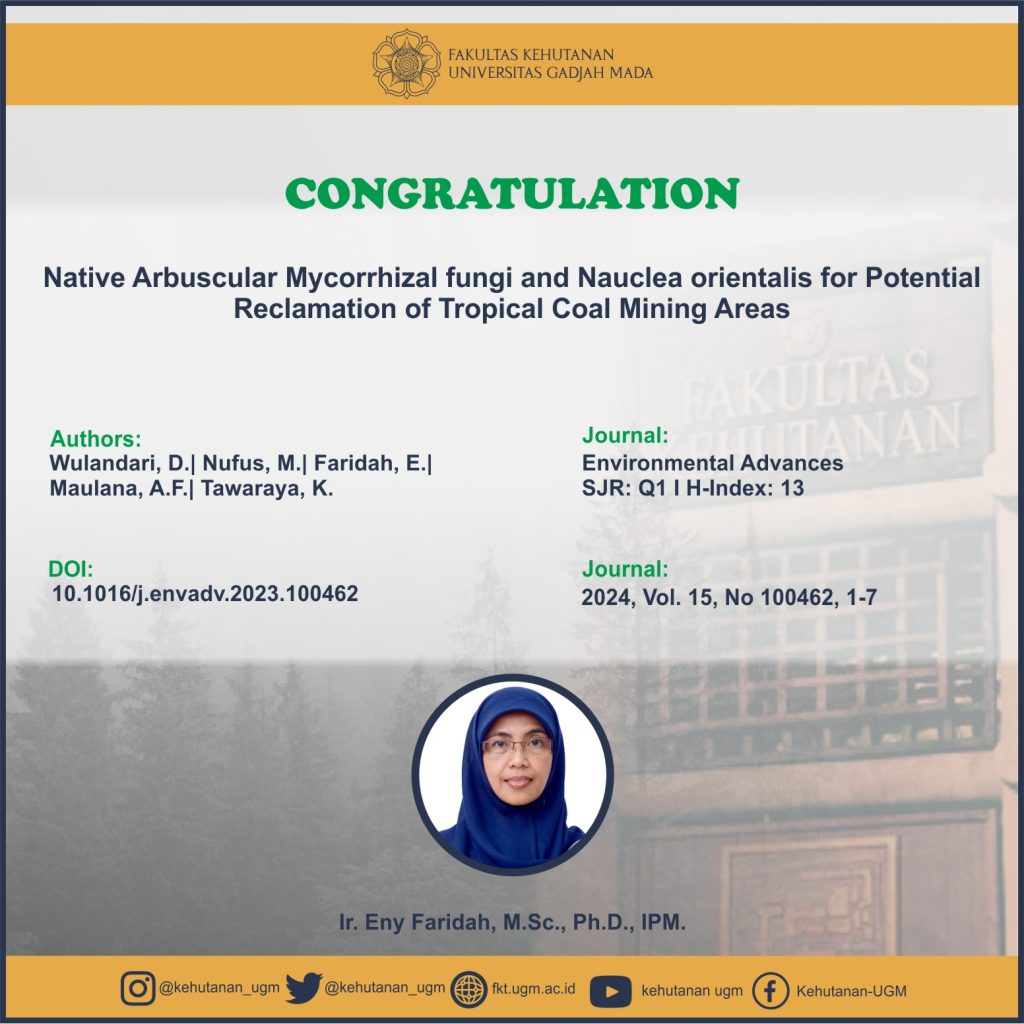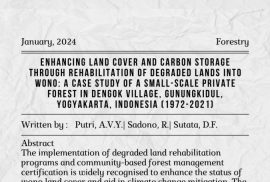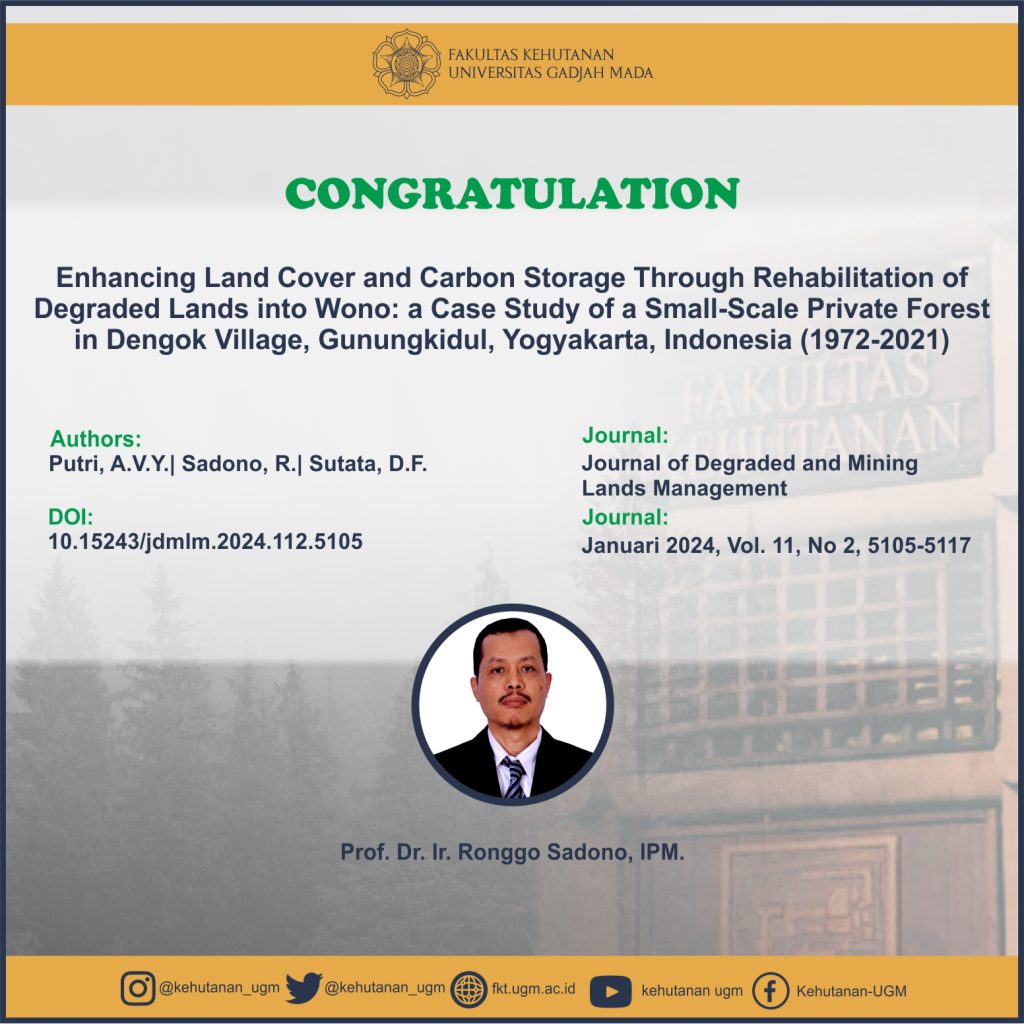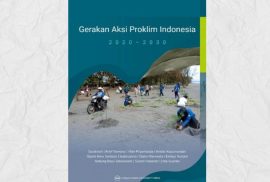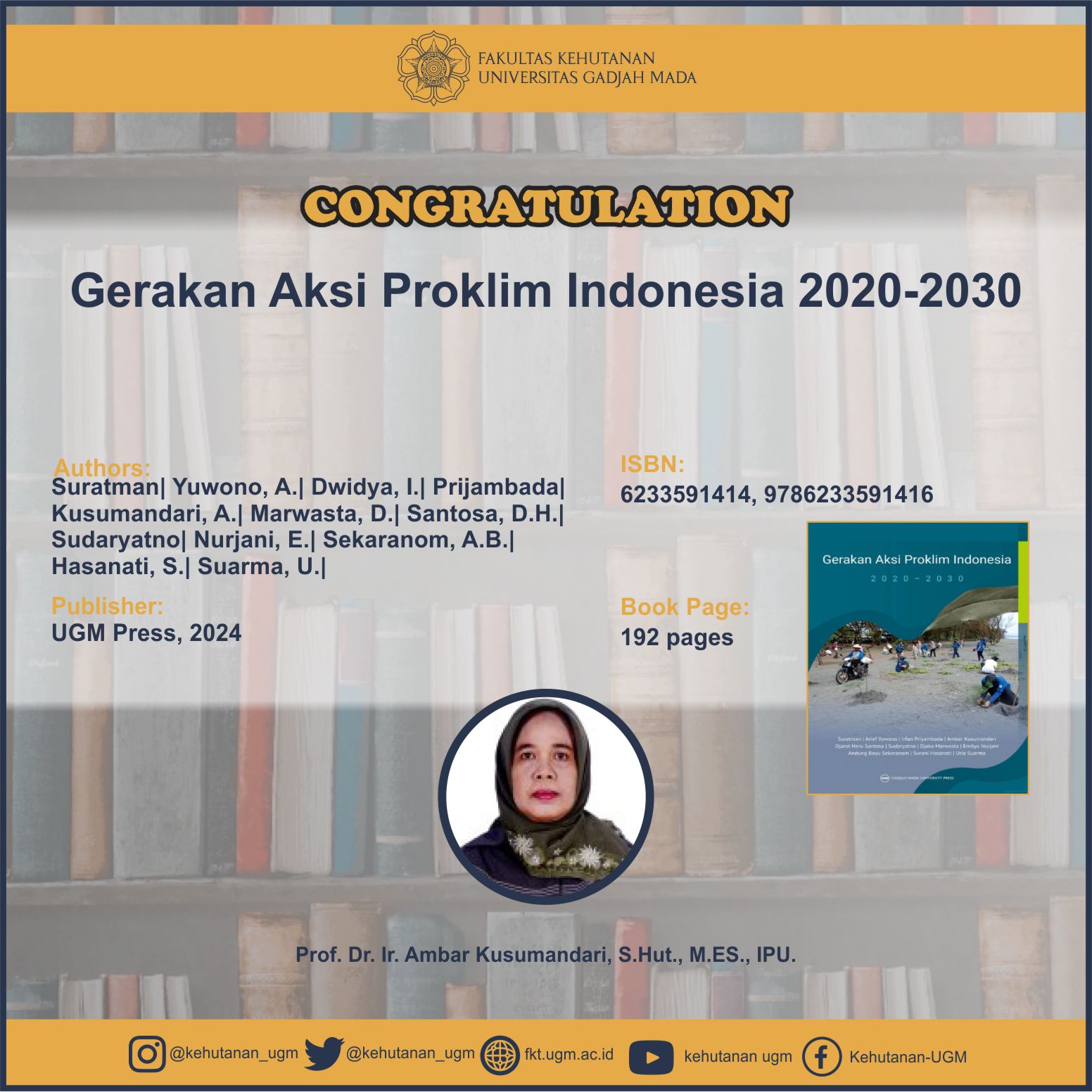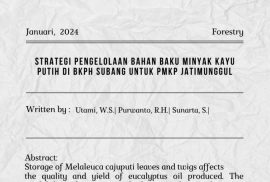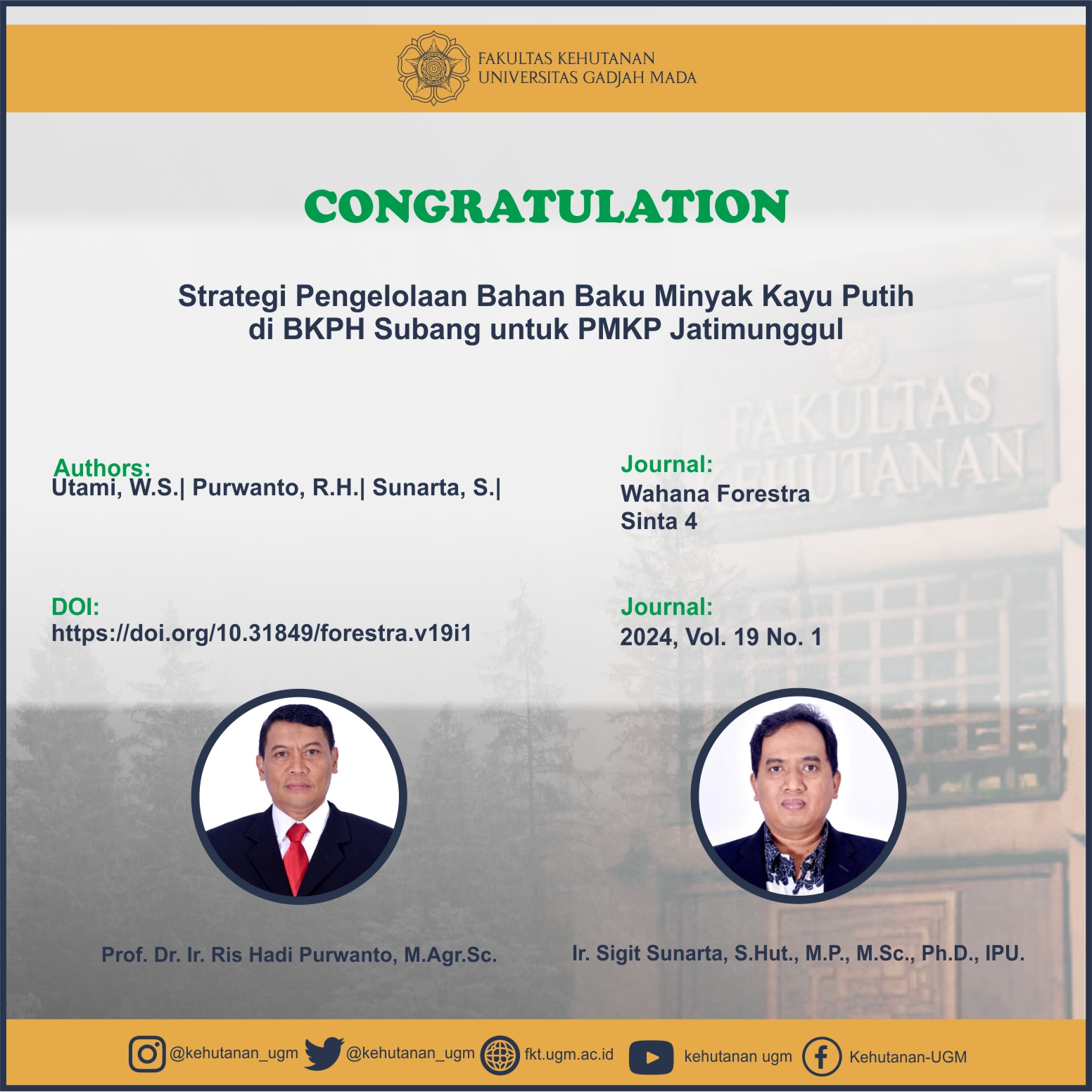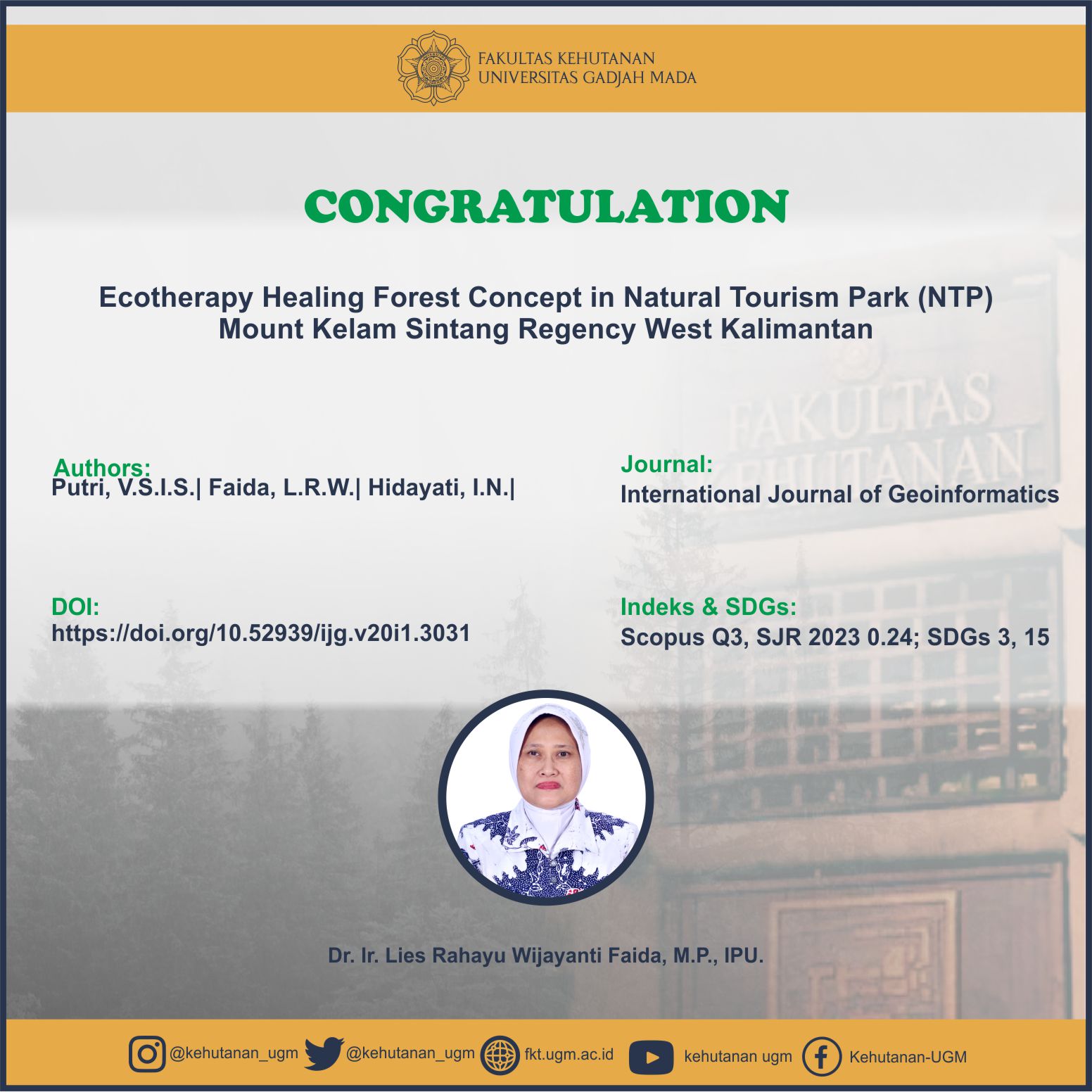
Abstract
Ecotherapy healing forest (EHF) is a new approach that utilizes forest resources for health and increasing ecosystem value. EHF is an alternative that functions to provide physical and mental health interventions by utilizing the environment and forest ecosystem. Ecotherapy healing forest can also help ensure that environmental conditions can always be maintained, so that people’s health and welfare can improve, in line with the Sustainable Development Goals (SDGs). This research was conducted in the area of Mount Kelam National Tourism Park, Sintang Regency, with data collection time in August 2022 – January 2023. Location selection is determined purposively by considering accessibility, travel time, and location value. The method used uses a site identification approach carried out on the routes available at NTP. The suitability of the Mount Kelam NTP location as a new EHT location was carried out by taking measurements at 6 location points covering an area approximately 8 ha, including measurements of vegetation, microclimate, noise level, wind speed and negative ion content. Based on the results of the analysis of site identification, community perceptions and preferences, site carrying capacity, and thermal comfort, the Mount Kelam Sintang Natural Tourism Park conservation area is very representative of being a site of ecotherapy healing forest which is beneficial for health. The final results of this research are described in the form of design recommendations for the site of ecotherapy healing forest at the six observation points.
SDGs:
SDG 3 : Kehidupan Sehat dan Sejahtera
SDG 8 : Pekerjaan Layak dan Pertumbuhan Ekonomi
SDG 13 : Penanganan Perubahan Iklim
SDG 15 : Ekosistem Daratan
Link Dokumen:
Download

